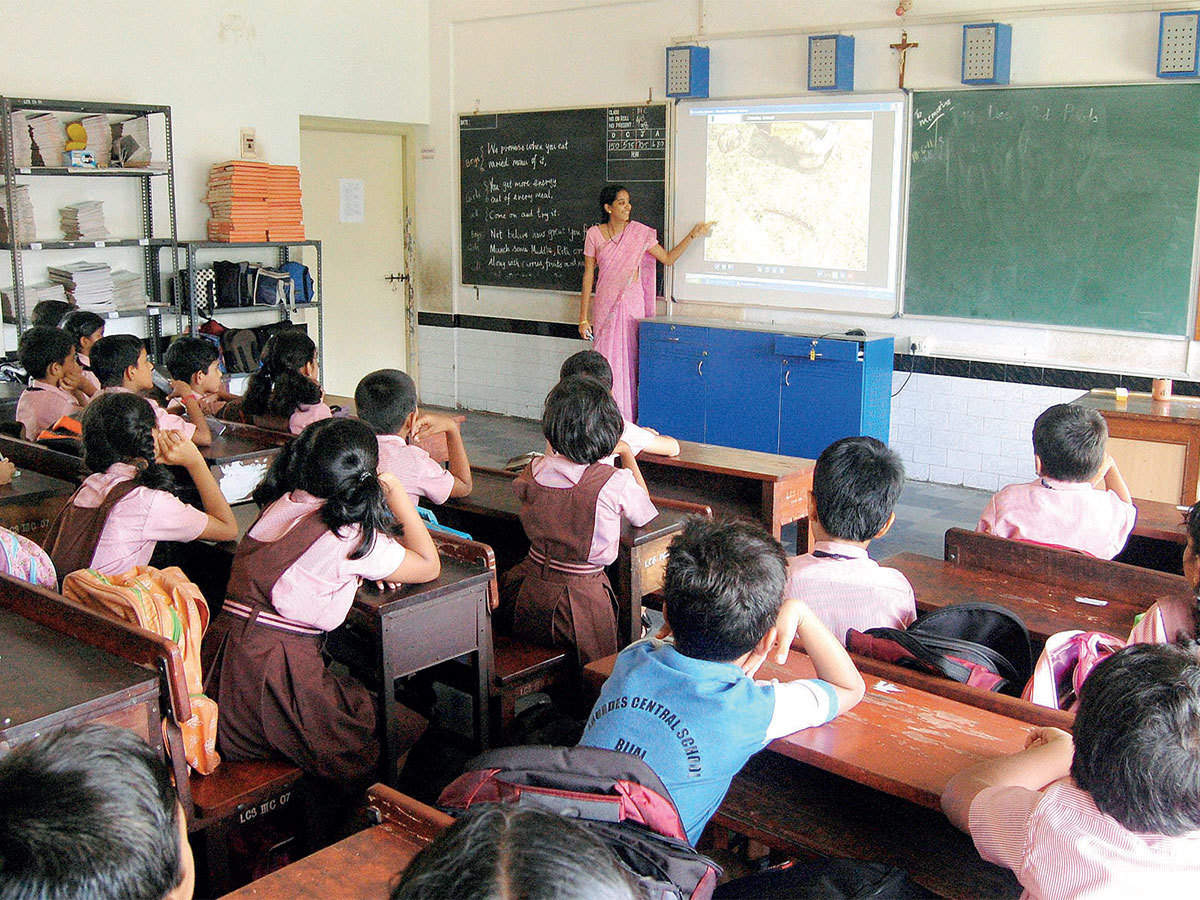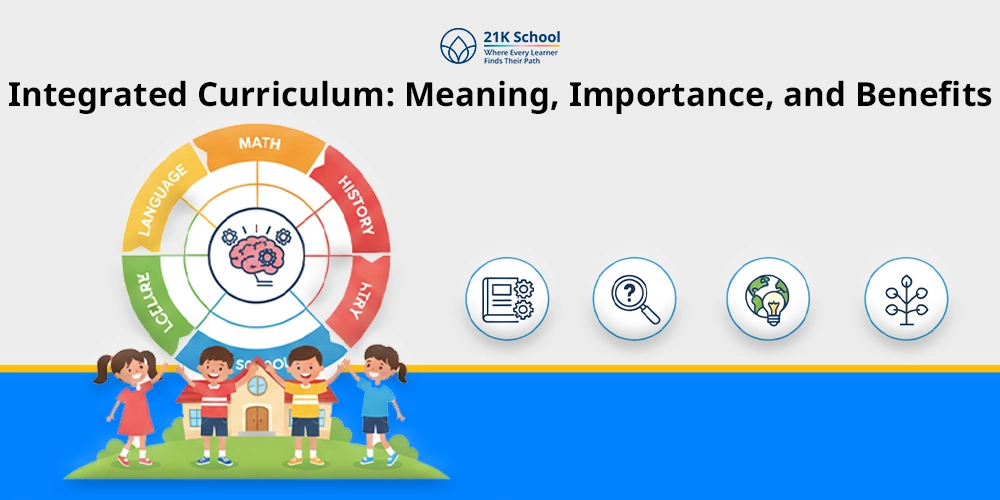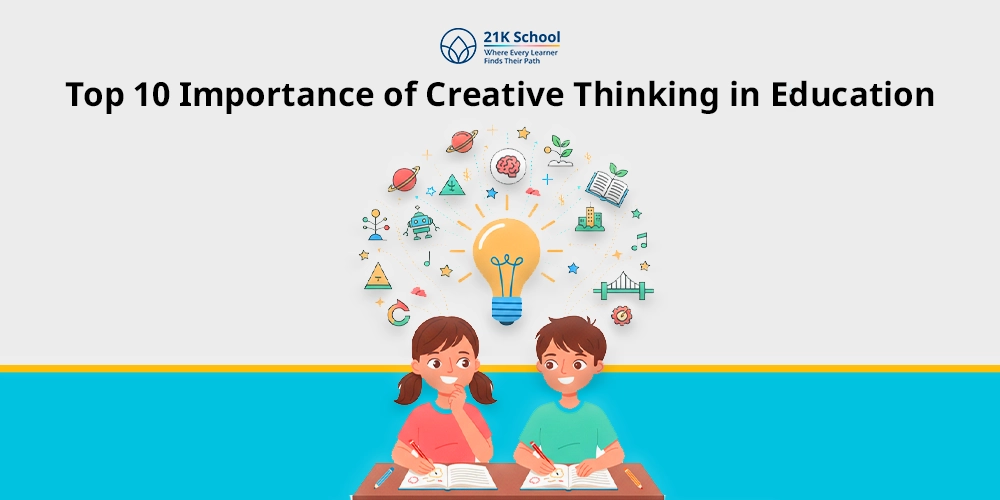
Modern education is a transformative landscape filled with growth, development and success. Have you ever wondered:
How education in India is evolving in the 21st century?
If yes you are in the right place. From chalkboard to digital smartboard, traditional approaches to modern education , memorization to skill development and many more.
Education system in the 21st Century in India is going through positive changes. With time technology and right approaches impacted diversely.
The rise of online learning, and new policies like the National Education Policy (NEP) 2020 changed the whole look. It’s not just about technology but also flexibility and a positive future mindset.
Understand the importance of online learning in students’ lives.
In this quick guide we’ll walk you through what’s happening, what’s working, and where we’re headed. Let’s dive in!
Contents
- Key Features of Education In 21st Century In India
- Importance of Education In 21st Century In India
- History Of Education In 21st Century In India
- Types Of Education In 21st Century In India
- Educational Reforms In India For The 21st Century
- Key Pillars of 21st Century Education in India
- Technology’s Role in 21st Century Indian Education
- Skills For The 21st Century Workforce And Society
- Traditional vs Modern Education: Understanding the Key Difference Between
- Challenges Of Education In 21st Century In India
- Opportunities and Future Trends of Education in 21st Century
- Conclusion: Walk Towards a Future-Ready India
Key Features of Education In 21st Century In India
Adopting a 21st century Indian education system is characterized by many things such as holistic development, skill-based learning and technology integration.
Understanding the key features of education in the 21st century in India include the integration of technology, personalized learning, a multidisciplinary approach etc.
The main focus is 21st-century skills like communication, collaboration, critical thinking, and creativity.
Here’s a more detailed look at these key features:
1. Multidisciplinary Approach
Multidisciplinary approach includes integration of different subjects in students education to foster holistic development, critical thinking, and problem-solving skills.
The key features of the 21st century include interdisciplinary projects, flipped learning classrooms, and personalized learning.
2. Personalized Learning
Personalized learning in education focuses on tailoring education to each student’s individual needs, learning styles, and pace. It is an important part of NEP 2020.
Key features like adapting teaching methods, offering choices in learning pathways, and utilizing technology to enhance the learning experience.
3. Integration of Technology
One of the key features of education in the 21st century in India is integration of technology. This aims to improve learning, accessibility, and engagement.
It helps in personalized learning, enhanced communication and collaboration, and the development of digital literacy skills.
Importance of Education In 21st Century In India
Education is important for individual growth, societal progress, and national development. Let’s understand the importance of education in the 21st century In India.
1. Individual Empowerment
Individual empowerment plays a crucial role in children’s education. It fosters a more equitable and prosperous society.
This helps kids with the skills and knowledge to navigate the complexities of the modern world without any hurdle.
2. Economic Development
Importance of economic development in 21st century education leads to a skilled workforce, promoting innovation, and driving economic growth.
This enhances the productivity, creative thinking, and entrepreneurship of students.
3. Social Progress
Social progress means providing economic development, promoting social mobility, and empowering students. It is ideal for addressing social issues and preserving cultural values.
Modern education is a powerful tool for social progress in India by creating a more equitable society for all.
History Of Education In 21st Century In India
In the 21st century, India’s education system has evolved with new innovations. From 2000 to 2010, initiatives ensured the growth and development of students.
- Initiatives like Sarva Shiksha Abhiyan aimed at universalizing elementary education, while the Right to Education Act (2009) made education a fundamental right for children aged 6 to 14.
- Higher education with the help of technology transformed learning with online platforms. The National Skill Development Mission (2015) focused on employability, while the NIRF ranked higher institutions.
- However, the National Education Policy (NEP 2020) introduced a new 5+3+3+4 structure. It consists of the foundational skills, multilingualism, and vocational training.
- Later due to pandemic accelerated online learning, revealing the digital divide. Variety of programs like PM eVIDYA and the concept of a Digital University aimed to bridge access gaps.
- In recent years the focus has shifted to coding, AI, and international collaborations. And to motivate digital schools like 21K school offering a flexible environment.
Overall, India’s education journey in the 21st century showcases a strong step toward inclusivity, innovation, and global integration.
Types Of Education In 21st Century In India
There are different types of education in the 21st century In India. Let’s understand each of three types:
- Formal Education: Formal education system consists of various levels such as pre-primary, primary, secondary, and higher education. It is governed by rules and curricula.
- Informal Education: Informal education is an important part of education in 21st-century India. It offers a flexible, student-centered, and continuous learning approach to gain knowledge and skills.
- Non-Formal Education: Non-formal education includes distance education, correspondence courses, online learning, and community-based programs.
This type is ideal to address learning needs beyond traditional schooling.
Educational Reforms In India For The 21st Century
In the 21st century educational reforms force on modern learning needs. Some of the key points of educational reforms in India:
- Focus on Early Childhood Education:
Focusing on early childhood education ensures the right mental and physical development of kids. As per NEP 2020, it mandates compulsory schooling from ages 3 to 18. This includes three years of pre-schooling for children aged between 3 to 6, emphasizing Early Childhood Care and Education (ECCE).
- Shift in Curricular Structure:
In traditional schooling the 10+2 structure is popularly used for education. However, in the 21st century it is replaced with a 5+3+3+4 structure. It focuses on Early Childhood Care and Education (ECCE), foundational years, preparatory years, and secondary and higher education.
- Government Initiatives:
Various government initiatives in India like Sarva Shiksha Abhiyan, PM SHRI Schools, and National Programme on Technology Enhanced Learning helps in contributing to educational reforms of the 21st century.
Key Pillars of 21st Century Education in India
Based on National Education Policy (NEP) 2020 key pillars include access, equity, quality, affordability, and accountability.
To understand the key pillars of 21st century education in India here’s what you need to know:
1. Access
Access means education for everyone. It means every child in India can go to school and get a good education in the 21st century.
No matter where kids live or how much money their family earns. The objective of access is to build more schools, improve infrastructure, and use technology.
So that even children in remote areas, villages or poor neighborhoods can learn without any huddle.
2. Equity
Equity is all about fairness in today’s education system. It refers to giving everyone a fair chance to learn.
Many children face difficulties, like girls, special needs children, or those belonging to poor families.
The policy wants to remove these barriers so all kids can study equally and feel included. Special help and support will be given to those who need it the most.
3. Quality
Quality means better learning for each kid. NEP 2020 helps by improving what and how children learn in schools.
Instead of just memorizing points, students need to think creative ideas, problem solving techniques , and understand subjects in-depth.
Learning will be more hands-on and connected to real life, which will help students become smarter and more capable.
4. Affordability
Affordability refers to everyone who can access 21st century education.
No matter whether it is a boy, girl, or special needs student making education accessible and affordable for all, especially for low-income families.
This may involve reducing tuition fees, providing scholarships, and exploring alternative learning models.
5. Accountability
Accountability is one of the key pillars which ensures that schools and education systems are accountable for the quality of education they provide.
This directly means establishing clear standards, monitoring progress, and evaluating outcomes.
Technology’s Role in 21st Century Indian Education
The rise of technology in education plays a major role in the 21st century. Let’s understand everything in depth:
1. Accessibility and Digital Literacy
In the 21st century technology helps students to gain knowledge in vast amounts. And this can be done through online education.
The accessibility of these tools is ideal to bridge the gap between students and learning. Additionally, digital literacy leads to achieving skills required for the digital world.
2. Collaboration and Communication
Collaboration and communication means students and teachers connect both within and outside the classroom.
This helps students and teachers to understand each other’s needs and express diverse perspectives, preparing them for a globalized world.
3. Teacher Professional Development
Not only students but teachers also need training and professional development. By adopting new techniques teachers can provide a positive environment.
This empowering them to integrate digital tools and resources into their teaching practices.
Skills For The 21st Century Workforce And Society
- Critical Thinking and Problem Solving: Critical thinking and problem solving includes analyzing the data, finding the problems, and developing effective solutions. This helps in achieving daily objectives.
- Communication: Communication plays an important role in morden education which includes written, verbal, and nonverbal skills. Communication skills help in conveying ideas and collaborating with others.
- Creativity and Innovation: Creativity such as unique painting ideas, drawing ideas and paper tearing activities to improve thinking skills of students. Developing original ideas and finding new solutions for any problems ensures innovation and progress in life.
- Collaboration and Teamwork: Students in the 21st century need to understand how collaboration and teamwork plays a crucial role. It also helps in achieving common goals. For example: Connecting with classmates for completing simple science projects.
- Socio-Emotional Learning: Socio-emotional learning or SEL is essential for success in the 21st-century workforce and society. SEL programs teach empathy, self-awareness, emotional regulation, and resilience, crucial for mental health and social harmony.
Traditional vs Modern Education: Understanding the Key Difference Between
| S.No. | Particulars | Traditional Education | Modern Education |
| 1. | Focus | Traditional education focuses on a teacher-centered approach. | Modern educationfocus on a student-centered approach. |
| 2. | Teaching Style | Traditional education offers various teaching style such as lectures, rote memorization | Modern education provides inquiry-based learning, project-based learning, and technology integration. |
| 3. | Curriculum Type | Traditional approaches are structured and subject-specific. | Modern approaches are flexible, interdisciplinary and individualized. |
| 4. | Learning Technique | It includes learning techniques like passive learning and memorization. | It includes techniques such as active learning, exploration and critical thinking. |
| 5. | Technology Available | In traditional education technology is limited or absent. | In modern education technology is integrated into learning and teaching. |
Challenges Of Education In 21st Century In India
Advancements come up with challenges faced by 21st century students in India.
And to overcome the problems in the Indian education system one needs to understand these challenges. Let’s explore them:
1. Access and Equity
In the 21st century, Indian education should be accessible and equitable to all. No matter whether it is a rural area or for a girl child.
However, this challenge can be overcome by various e-learning schools like 21K school offer homeschooling opportunities for high school students.
2. Quality of Education
Quality of education hinders when schools lack proper education, critical thinking skills, and outdated teaching methods etc.
To ensure the quality of education is maintaining regular checks on activities and adopting updated techniques can help toddler to high school students.
3. Curriculum and Pedagogy
Challenges such as outdated curriculum and pedagogy for high school students focus on theory-based education which can affect growth.
Instead of traditional learning, choosing practical skills for students preparation for the workforce. Ensure students get an updated curriculum.
Opportunities and Future Trends of Education in 21st Century
Education in the 21st century offers new opportunities for students and future trends in education helps to gain knowledge.
Let’s understand the key opportunities:
1. Technology Integration
In this era technology integration plays a vital role in Indian education. By transforming teaching and learning by increasing access, improving quality, and fostering skills.
Technology not only enhances student engagement but also supports personalized learning, and facilitates communication and collaboration among students.
2. Personalized Learning
Technology can also be improvised by personalized learning. It enables adaptive learning platforms and individualized learning paths.
This caters to a diverse range of learning styles that helps students to understand new things without any hurdle.
3. Teacher Training
Integration technology also positively impacts teachers training. Both traditional and online learning platforms learn new approaches.
These approaches are ideal for kids to gain real life examples, explore new feelings and skills that help in achieving a better career.
4. AI Integration
In Indian education AI integration is transforming the learning landscape by enabling personalized learning, improving access to quality education, and streamlining administrative tasks.
AI reduces teachers workload so that they can easily focus on teaching new skills and activities like gross motor skills activities.
To know more about challenges and opportunities of online and offline education read how online education is better than classroom education .
Conclusion: Walk Towards a Future-Ready India
In today’s era change is all about adapting new skills. The traditional concept of school must evolve to remain relevant in the 21st century.
Today’s students do not stick to the classroom; they learn continuously through diverse platforms and real-world experiences. The rise of online education trends and statistics keep everyone updated.
To meet their needs, schools must embrace modern teaching techniques that promote critical thinking, creativity, collaboration, and digital literacy.
By integrating technology, personalized learning, and flexible environments, education can become more engaging, inclusive, and effective.
Online schools such as 21K school offer dynamic learning which ensures it remains vital in nurturing future-ready individuals who can thrive in an ever-changing global landscape.


